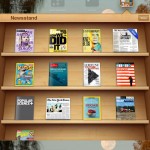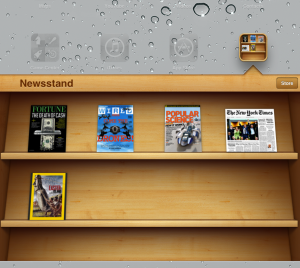 I stopped reading feeds and switched (back) to magazines and a few daily newspapers. Been slowly adding magazines over the last 12 months, resubscribing many of them, which I stopped reading in the last ten years.
I stopped reading feeds and switched (back) to magazines and a few daily newspapers. Been slowly adding magazines over the last 12 months, resubscribing many of them, which I stopped reading in the last ten years.
Today, I got the first print copy of Businessweek (for some reason they still send a print version, when I don’t need one!) which I subscribed few weeks ago. I used to buy Businessweek (and Fortune) in bulk from the streets of Kolkata from vendors who sell / recycle old issues at a fraction of the cover price.
Then content moved to Internet. Content everywhere, but few really look authoritative.
Coincidentally, saw the news today that Jeff Bezos is buying Washington Post.
Old is the new media.
Here’s why this is happening:
- Content overload. Clearly, it’s hard to track down every breaking news from every site 24×7. The main issue with content overload is authority. Linkage does not mean authority. Most of the time, the authority of cited article has nothing to do with content, it’s mere point-in-time authority. It takes time and money to produce content which is worthy of attention. Old media still has resources.
- Old media has distribution (and brand). People still go to a Fortune, Businessweek, Time, National Geographic. If we take out the technology blogs and technology readers, old media carries the distribution. They lost quite a lot of traffic in the early days of Internet but most of them have caught up.
- Journalism is (still) an art. Internet made journalism a science — you could create content and make it fancy. But at the core of any content is a story. Story-telling is an art. Embellishment is a science, which Old media has caught up in the last decade.
- Tablet is the new print. The web levels the playing field between the big and small. Old media really struggled to break it even from an average Joe blogger churning out content in real-time. iPad upends the game. Digital magazines and newspapers bring out the brand again.
What would be killed in next five years is print, not the publishing house. I’m long on old media.
